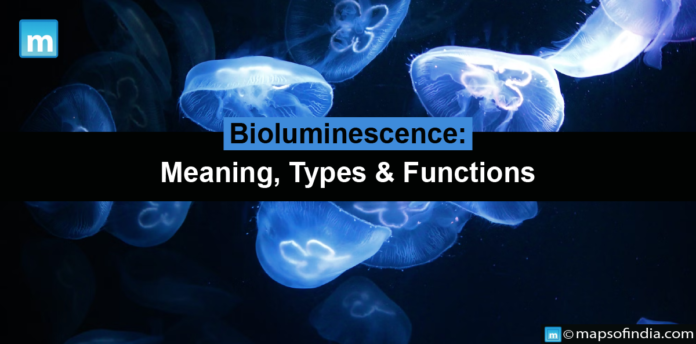Bioluminescence is the creation and emission of light by a living creature. It is a chemiluminescence type, a chemical reaction that produces light. Bioluminescence is common in marine vertebrates and invertebrates, some fungi, microorganisms including some bioluminescent bacteria, and terrestrial arthropods such as fireflies.
The Discovery Of Bioluminescence
Aristotle made the first recorded observation of bioluminescence in the fourth century BC. He described the appearance of fireflies in the night sky. Francesco Redi, an Italian scientist, undertook experiments to investigate the nature of bioluminescence in the 17th century. He discovered that the light emitted by fireflies was caused by a chemical reaction rather than by magic or supernatural forces.
Christian Gottfried Ehrenberg, a German scientist, found that numerous marine species, including jellyfish and squid, were bioluminescent in the nineteenth century. He also discovered that bioluminescence was not limited to animals but could also be found in plants and fungi.
Cause Of Bioluminescence
The luciferin-luciferase system initiates the chemical reaction that causes bioluminescence. Luciferin is a light-emitting molecule that reacts with oxygen in the presence of the enzyme luciferase. The reaction then generates light and heat. The amount of light generated is determined by the type of luciferin and luciferase used.
Other elements that can influence bioluminescence include luciferin and luciferase concentrations, temperature, and pH of the environment. Other compounds can also affect the light generated. Some organisms, for example, produce bioluminescent proteins that specific light wavelengths can activate.
Types Of Bioluminescence
-
Bacterial Bioluminescence
This type of bioluminescence is produced by symbiotic bacteria living in other organisms’ bodies. It is the most common type of bioluminescence and can be found in many different animals, including fish, squid, jellyfish, and insects.
-
Autogenic Bioluminescence
The organisms themselves produce this type of bioluminescence. Autogenic bioluminescence is less common but is found in some marine animals, such as the lanternfish and bobtail squid.
Functions Of Bioluminescence
-
Attracting mates
Bioluminescence is used by many creatures to attract mates. Fireflies, for example, flash their lights in a pattern that is unique to that species. This makes it easier for them to find each other in the dark.
-
Deterring predators
Some species use bioluminescence to discourage predators. Deep-sea fishes have bioluminescent organs that they can flash to frighten predators.
-
Communicating with other members of the species
Some creatures use bioluminescence to communicate with other members of their species. Squids use bioluminescent ink to communicate with other squids.
-
Thermoregulation
Some species use bioluminescence to regulate their body temperature. The lanternfish uses bioluminescence to generate heat in the chilly depths of the ocean.
Uses And Future Of Bioluminescence
Bioluminescence offers a wide range of applications. It is utilised in research and medicine to analyze creature behavior, track animal movement, identify pollution, detect cancer cells, and track therapy success. Bioluminescence is a fascinating natural phenomenon that is currently being studied. However, the possibilities for its use are limitless. Scientists are attempting to create new ways to harness bioluminescence to better our lives, from novel medical treatments to more efficient energy production.




